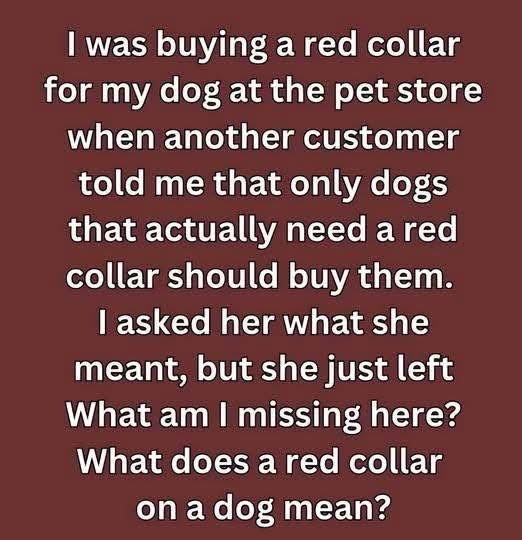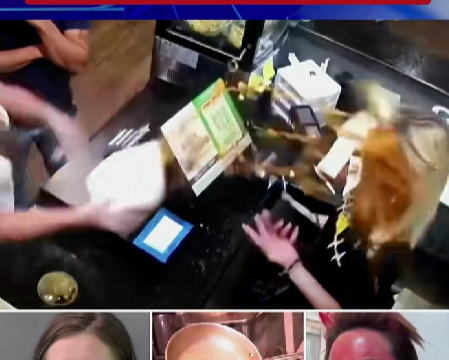When it comes to understanding our pets, especially dogs, it’s not just their wagging tails or playful antics that tell us how they’re feeling—there are more subtle indicators we should pay attention to, including the color of their collars. A dog’s collar isn’t always just a style accessory; sometimes it carries a very specific message. One of the most important collar colors to be aware of is red.

If you ever see a dog wearing a red collar, it’s essential to recognize that this is more than a fashion statement—it’s a signal that the dog might need extra space or may not react well to close contact. Understanding this can help prevent unwanted interactions and make our communities safer for both people and pets. Over time, many dog owners and trainers have adopted a color-coded collar system to indicate certain behaviors or needs of their dogs. For instance, a green collar usually suggests that the dog is friendly and open to social interaction, while yellow often means the dog is still in training or is anxious and should be approached slowly. Red, however, universally signifies a need for caution. It typically indicates that the dog may be nervous, reactive, or even aggressive in certain situations, and that others should be extra mindful before approaching.
Research into canine behavior and communication supports this color system. Experts in animal behavior note that dogs wearing red collars are often those who require more personal space, either due to fearfulness, past trauma, medical conditions, or specific behavioral challenges. Red is a natural choice for this warning system because, in most areas of life, red signals alert or danger—whether it’s a stop sign, a traffic light, or an emergency notice. When you see a red-collared dog, the best response is to proceed with caution. Don’t immediately try to pet the dog or let your own pet run up to greet it. Instead, observe the dog from a distance and pay attention to its body language. While red collars are a general warning, they don’t automatically mean a dog is aggressive. A calm posture, gentle tail wag, or relaxed ears could mean the dog is okay in that moment.
However, signs like a stiff body, tucked tail, raised hackles, or bared teeth are red flags telling you to back off. Another smart move is to speak with the dog’s owner. They can offer valuable insights into the dog’s temperament, any triggers the dog might have, or whether it’s okay to approach. Most owners who choose red collars for their dogs are aware of their pet’s limits and will appreciate your respectful behavior and genuine concern. This open communication can prevent accidents and create better understanding between dog owners. If you’re walking your own dog and encounter one wearing a red collar, it’s important to be especially mindful. Dogs don’t always pick up on social cues the way humans do, and even a friendly dog might overwhelm or stress out a red-collared one. Keep your dog on a short leash, guide them away calmly, and use the moment as a training opportunity to reinforce good behavior around other animals. Beyond individual encounters, it’s important to raise awareness about what red collars mean.
Many people still don’t know about the significance of collar colors, and educating them could go a long way in creating safer environments. Talk about it with fellow dog walkers, share tips on social media, or suggest it at local dog parks. The more people understand this simple communication system, the better it is for everyone—especially the dogs who need a little extra understanding. In conclusion, spotting a dog with a red collar should immediately prompt you to be cautious and considerate. It’s a clear and purposeful message that the dog might not be comfortable with strangers or sudden interactions. By recognizing and respecting this signal, you contribute to a safer, more empathetic world for pets and their owners. Always observe the dog’s behavior, speak with the owner when in doubt, manage your own dog responsibly, and help others learn the importance of red collars. This simple awareness can make a meaningful difference in preventing stressful or dangerous encounters and ensuring all dogs get the space and respect they need.





